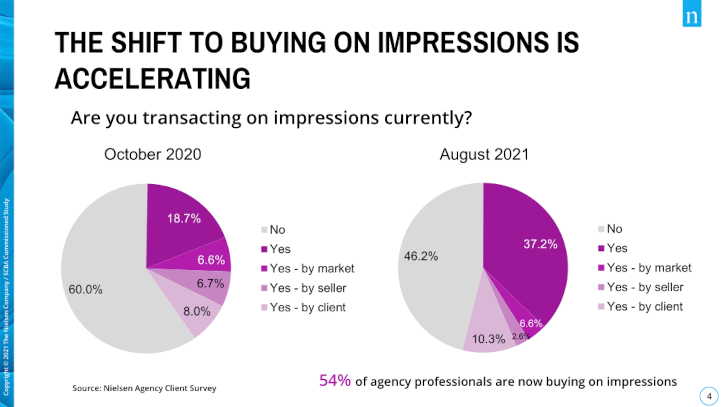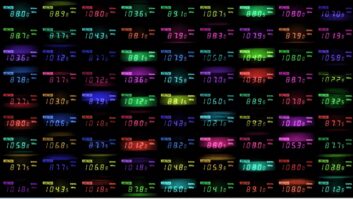There is power in impressions, particularly for the radio industry, according to a new Nielsen study.
The study, commissioned by the Southern California Broadcasters Association, found that ad agencies are increasingly relying on impressions to evaluate media. According to the study, impressions provide a brand-safe environment for advertisers looking for premium impressions at the local level.
[Read: Local Radio Ad Revenue to “Rebound Somewhat”]
And the interest in impression-based buying is on the rise. The study found that the shift to buying on impressions is accelerating: more than 50% of agency professionals are buying media this way.
The study looked at the benefits of impression-based buying and found that this purchasing style offers more granular, detailed information to those who are trying to evaluate radio advertising and digital buys using a common metric. In addition, the study found that impression-led buying also adds value to more dayparts and offers easier comparison across different markets.

“The importance of combining radio and digital advertising effectively cannot be overstated, and impressions are clearly where the industry is headed,” said Miles Sexton, president of the Southern California Broadcasters Association. “As radio continues to evolve within the digital ecosystem, the building blocks of a successful cross-platform campaign will include impressions.”
According to the study, impressions allow radio to add scale in a cross-platform environment. Impression-based selection also can be used to recommended best practices for converting to cost per thousand impressions (CPM) for radio buyers and sellers. The study also found that buying on impressions not only works regardless of market size but gives buyers and sellers an easier means of comparing one market to another.
More information on the study can be found here.







